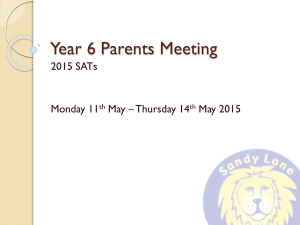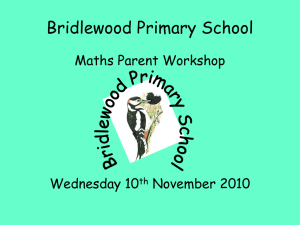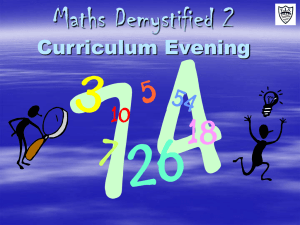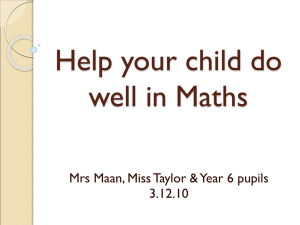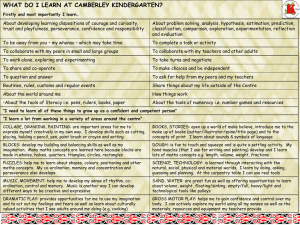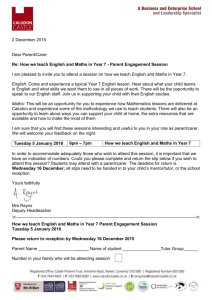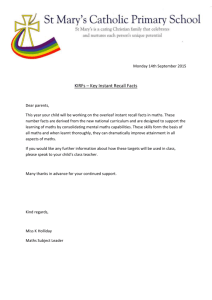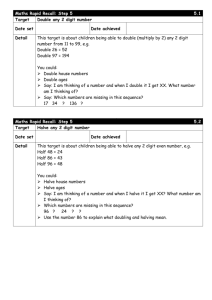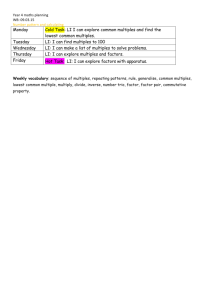click here for maths
advertisement
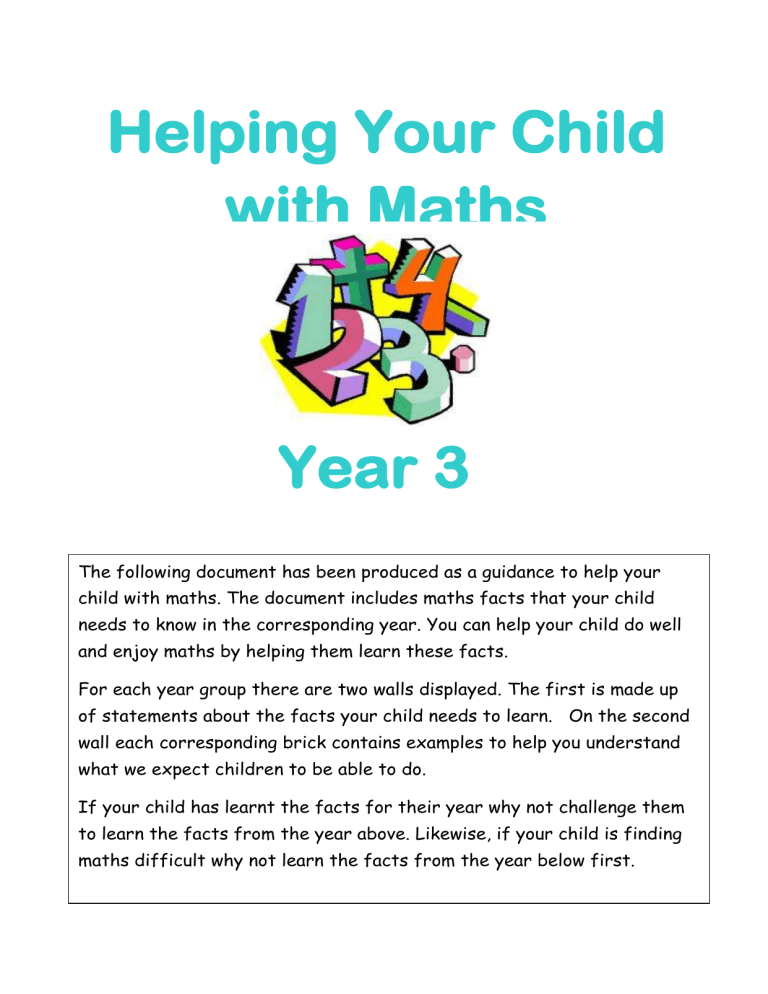
Helping Your Child with Maths Year 3 The following document has been produced as a guidance to help your child with maths. The document includes maths facts that your child needs to know in the corresponding year. You can help your child do well and enjoy maths by helping them learn these facts. For each year group there are two walls displayed. The first is made up of statements about the facts your child needs to learn. On the second wall each corresponding brick contains examples to help you understand what we expect children to be able to do. If your child has learnt the facts for their year why not challenge them to learn the facts from the year above. Likewise, if your child is finding maths difficult why not learn the facts from the year below first. Know all the addition Know all the addition Know or work out all and subtraction facts and subtraction facts sums and differences for the totals to 15 for the totals to 20 of multiples of 10 Know the Know the Know the multiplication facts multiplication facts multiplication facts for the three times for the four times for the six times table table table Know division facts for Know division facts the three times table for the four times table Know or work out the number pairs that total 100 Children will find it easier to learn these facts of they can see the links between them e.g 2+16=18 16+2=18 18-2=16 18-16=2 Recognise multiples of two up to 1000 For example, rapidly: • find pairs of cards with a total of 20; • say how many more counters or cubes are needed to make 20 altogether; • say how many steps must be taken to get from 13 to 20 on a number line, or from 20 back to 13 Make pictures or patterns with triangles. Your child can count the points on the triangles if they get stuck 4 lots of 3 =12 3÷3=1 6÷3=2 9÷3=3 12÷3=4 15÷3=5 18÷3=6 21÷3=7 24÷3=8 27÷3=9 30÷3=10 Play ‘ping pong’ to practise with your child. You say a number. They reply with how much more is needed to make 100. Know division facts for the six times table Recognise multiples of five and ten up to 1000 Using their knowledge of the pairs of numbers that make tens children can identify totals such as 15+5=20 38+2=40 Use pictures of cars or horses to help. If one horse has 4 legs, how many legs on three horses. 3x4=12 How many dogs if there are 20 legs all together? (How many groups of 4 in 20?) List the numbers from 1-20 number grid. Ask your child to count on in twos from 1 and colour in the numbers as they say them . What does your child notice about the numbers they have landed on? ( that the numbers end in 0, 2, 4 , 6 or 8) Chant as whole number sentences: One six is six, two sixes are twelve . . Chant as lists of multiples: Six, twelve, eighteen, twenty-four . . Chant them forwards and backwards How many bags of six apples can I make if I have 18 apples in a box? (How many groups of 3 in 18?) Know that multiples of 5 end in a 5 or a zero. Know that multiples of 10 end in a zero Frequently How long should I spend on each brick? We expect most children to work on each wall for about one year as the emphasis is Asked Questions Tables Trios on the facts being very secure in your child’s mind so they can recall them rapidly. These can help children learn their division tables at the same time as their multiplication tables Which brick should I start with? 21 Your child’s teacher will let you know the bricks that will be particularly helpful to start with. However you know your child and may choose to start with an area of maths they enjoy. A positive attitude to maths is essential What is ………………? There seem to be so many new words in maths now! What are the four facts associated ? ? 3 7 27 I am thinking of a tables You are not alone in not knowing what some of the technical language means. So of wethe have included trio. Two numbers are a glossary. If you are still not sure ask your child’s teacher 21 and 7. What is the third (sometimes the four related number? with this trio of numbers? facts that use the same 3 numbers are called fact families) 3x7=21 9 7x 3=21 21÷3=7 3 21÷7=3 Array : A way of drawing multiplication and division as rows and columns Glossary Even Numbers: The numbers that can be divided equally into groups of 2 and give a whole number answer. The first 5 even numbers are 2. 4, 6, 8, and 10 Difference: The difference between two numbers is the distance between them. e.g. 2007-1999= 8 , The difference between 1999 and 2007 equals 8. Division – Division questions can be solved in two ways. SHARING GROUPING 12÷2=6 12÷2=6
